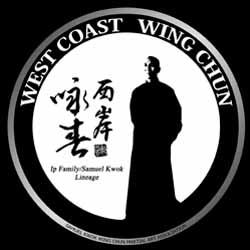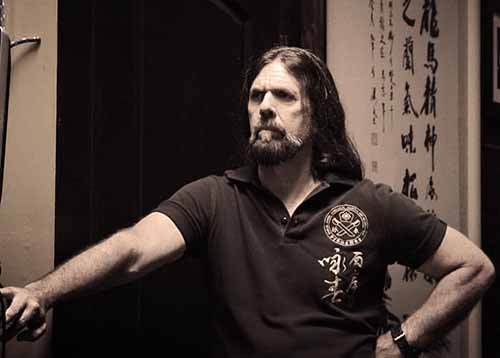Wing Chun is a Chinese martial art that is known for its practicality and effectiveness in real-world self-defense situations. While Wing Chun has many techniques that can be used in a fight, there are ten that are particularly dangerous and effective when used correctly.
Top 10 Devastating Wing Chun Techniques
1. Jarn (Pai, Fahn, Gwai, Cup, Hei) – Wing Chun’s Elbows
Wing Chun’s elbows are of the most devastating weapons in martial arts. The art’s elbow strikes are quick, powerful, and efficient, allowing practitioners to deliver a significant amount of force to their opponent with minimal effort.
The elbow strikes in Wing Chun are ideal for close-range combat. They are so devastating because they are delivered with a short, sharp motion with the entire body. They use a power-generating combination of footwork, body positioning, and arm movement.
Another reason Wing Chun’s elbow strikes are so devastating is because practitioners aim them at the opponent’s most vulnerable areas. The elbows are used to strike the opponent’s head, neck, or other sensitive areas, making them a highly effective weapon in self-defense situations.
Wing Chun’s elbows are also very versatile. The art makes use of a variety of elbow strikes that can be used at differing angles, including Pai Jarn (horizontal), Fahn Jarn (Backwards), Gwai Jarn (diagonal downward), Cup Jarn (downward), and Hei Jarn (upward).
2. Biu Ji/Bil Gee (Thrusting Fingers)
Wing Chun’s Bil Gee technique is a culmination of power developed over many years of training. The technique requires precise alignment of the body, with the fingers, wrist, elbow, and shoulder working together to produce a potentially lethal strike. Proper technique, timing, and sensitivity are essential to deliver an effective Bil Gee strike.
A practitioner aims the Bil Gee at the opponent’s most vulnerable areas, the eyes, throat, pressure points or striking meridians and is potentially lethal.
3. Fak Sau (Whisking Hand/Swinging Arm)
Wing Chun’s Fak Sau is a dangerous weapon because of its low profile, palm down positioning making it difficult to defend. Practitioners can generate massive amounts of power at close range and direct it at the difficult to access, yet extremely vulnerable areas of the throat and neck.
4. Lin Wan Kuen (Chain Punch)
Lin Wan Kuen involves a rapid-fire series of punches aimed at the head or vital points. Chain Punching overwhelms the opponent with a flurry of strikes, each one faster than the next, creating a compounded, concussive result. In a real fight, the Chain Punch can devastate an opponent and is potentially lethal.
5. Chow Kuen (Whipping Fist)
Chow Kuen takes advantage of Wing Chun’s devastating whipping power (fa jing) to create an explosive force at the point of impact. Targets include head, jaw, ribs, kidneys and other vulnerable points. Its power crushes and penetrates causing damage externally and internally.
6. Lop Sau
Wing Chun’s Lop Sau, or Pulling Hand, is a technique used to control an opponent’s arm and balance while redirecting their attack. The technique involves grabbing an opponent’s arm and pulling it down and/or across their body, leaving them vulnerable to a counter-attack. With the correct energy, the lop sau can create a whiplash effect which can damage the spine and joints.
A practitioner typically uses Lop Sau with Wing Chun strikes such as Fak Sau, soft palms, hard palms, and kicks. Lop Sau adds power to these strikes increasing their devastation exponentially.
7. Vibrating Palms (Jek Cheung, Wang Wa Cheung)
Wing Chun’s Jek Cheung (vertical palm) and Wang Wa Cheung (horizontal palm), also known as Soft Vibrating Palms, are devastating techniques that not only cause external damage but also internal damage to an opponent’s body. Practitioners execute soft palms with relaxed power targeting internal targets such as the body’s organs. It is an extremely versatile tool that practitioners can use in many differing ways with minimal conditioning required.
The relaxed and flexible hand of a vibrating palm stays on the opponent delivering its power inside the opponent’s body. Its energy travels internally as a wave. When the practitioner executes more than one palm, the energy multiplies exponentially inside the opponent like a tidal wave creating massive and potentially lethal damage.
8. Tek/Gerk (Choi, Chai, Deang)
Wing Chun’s Tek, or Kicking Techniques, are devastating weapons that involve a series of fast and powerful kicks aimed at an opponent’s legs, groin, or body. There are several types of kicks in Wing Chun, the most devastating being the Deang Gerk or nailing kick, Choi Gerk or pressing kick, and Chai Gerk, or Scraping Kick, each with their own unique energies, characteristics and benefits.
Used in the right way, Wing Chun’s kicks can permanently incapacitate an adversary issuing damage to joints, tendons, and ligaments. The aforementioned lop sau is particularly well-paired with these kicks adding exponential damage to the opponent.
9. Hard Palms (Tsang Sau, Dei Cheung Sau)
Wing Chun’s Hard Palms, including Tsang Sau and Dei Cheung, are powerful palm techniques. The Tsang Sau uses the knife edge of the hand and lower heel of the palm to attack the opponent’s throat and/or jaw. The Dei Cheung emphasizes use of the palm heel and can damage the groin and organs.
10. Ji Si Sau (Flesh Tearing Hand)
Wing Chun’s Ji Si Sau, or Flesh Tearing Hand, is a powerful technique that involves using the fingers to grab and tear an opponent’s flesh (skin, muscles), pressure points, and cavities. It is effective at sealing the airways and blood flow which can have lethal effects.
In conclusion, the top ten devastating techniques of Wing Chun are a testament to the effectiveness of this martial art in close-quarters combat. However, it is important to remember that Wing Chun is not just about fighting; it is also about developing discipline, focus, and respect. By training in Wing Chun, practitioners can not only learn to defend themselves but also develop a deeper understanding of themselves and the world around them.




